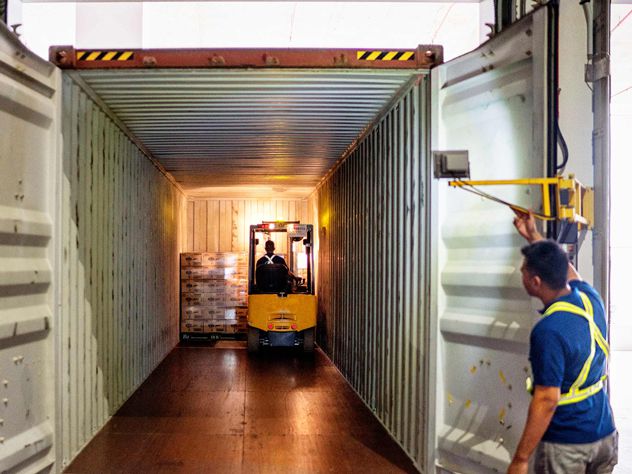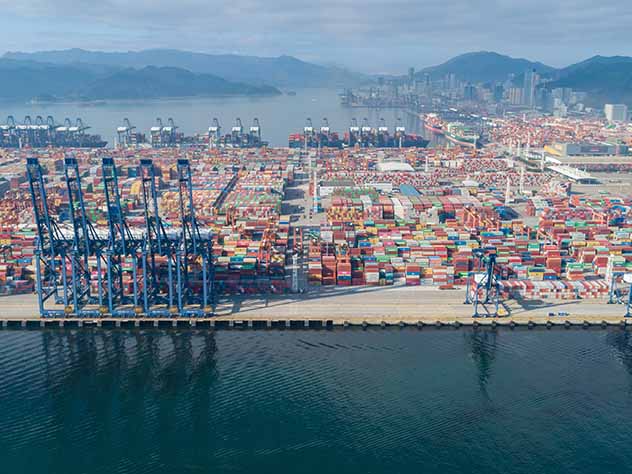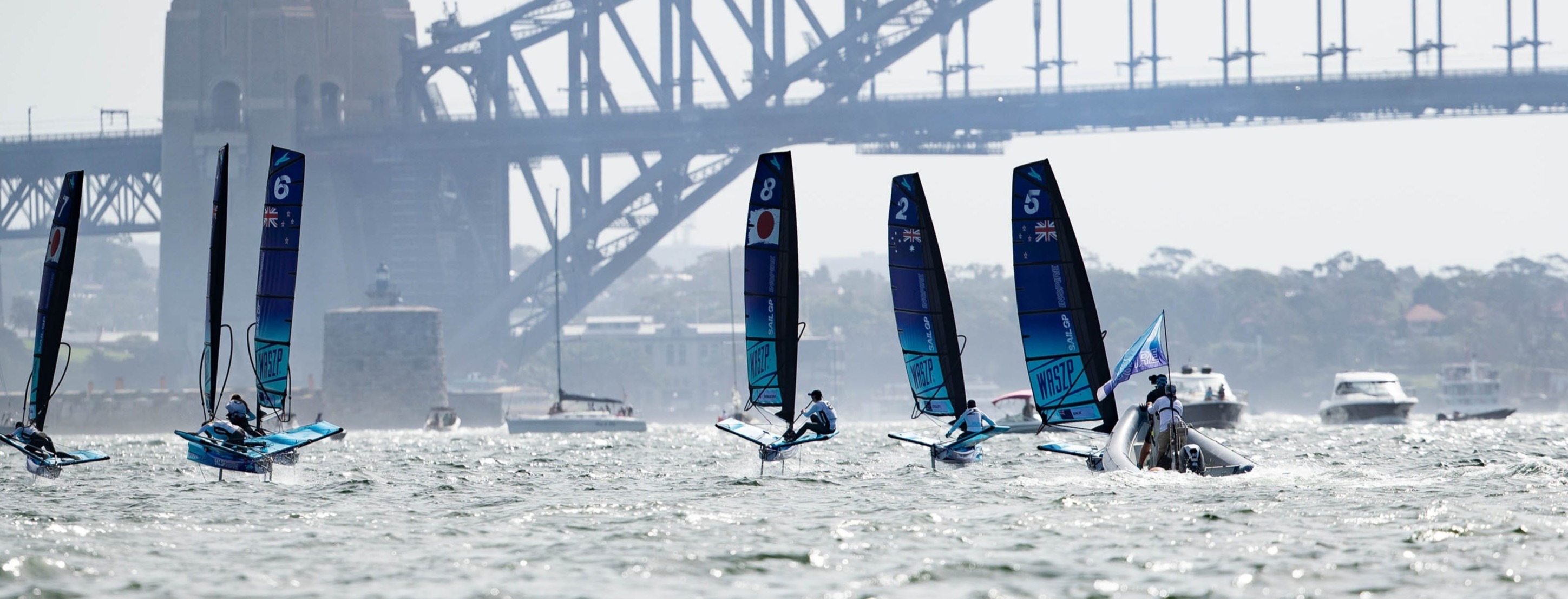- Is the overseas market becoming important for your business?
- Did your product website attract the interest of potential overseas buyers?
- You have successfully entered the domestic market, and with the increasing number of enquiries from overseas buyers, it is only a matter of time before the first international order will be placed?
- Or vice versa, do you source your goods from overseas?
We will support you! In a nutshell - This is how to book a shipment:
- Quote the shipment. With Kuehne+Nagel you can do it easily online via myKN or directly contact us.
myKN is your easy access to get a quote, book, and track online. Your shipments will be managed on a personalized dashboard that gives you a full overview and easy access to the information needed.
Signing up is quick and easy: just enter your e-mail address, choose a password, and get your first online quote within seconds. Learn more
- Choose the best shipping option.
- Prepare the required documents for the shipping process.
- Revise and confirm the shipment details. Make sure everything is correct.
- Place your shipment booking.
- Process the payment.
- The shipment then passes through customs inspection at port of entry.
- Receive and pay the bill for customs duties and taxes.
Before transport

 What is a freight forwarder?
What is a freight forwarder?
It is a "travel agency" for goods or the architect of the supply chain. With its global network, Kuehne+Nagel arranges door-to-door transport by truck, rail, inland waterways, air and sea freight. Other services include warehousing and distribution, customs clearance and transport insurance.

 Why work with a freight forwarder or logistics provider?
Why work with a freight forwarder or logistics provider?
When preparing an overseas trip, you can ask a travel agency to book the flights, hotels and local transport. Many of these tasks can nowadays be done directly online without the involvement of a third party. However, for more complex travel preparations, the travel agency's expertise is still essential. The situation is similar for sending packages and larger deliveries. Here the freight forwarder or logistics provider is the travel agency, so to speak, and thus an essential link in the global supply chain.
The freight forwarder is sometimes referred to as the decathlete of global trade and the supply chain. Rather than working with and consulting with many individual carriers and brokers to move a shipment around the world, the freight forwarder serves as a single point of contact and operator for door-to-door shipment of cargo between countries and continents.

 Who pays the transport costs?
Who pays the transport costs?
Having determined the sales price of the product, it needs to be decided who should pay the transportation costs – you or the buyer? The internationally recognised Incoterms will help you make this determination.

 Under which payment terms should I ship?
Under which payment terms should I ship?
Open account, cash up front or Letter of Credit – what to choose? It is best to consult with your bank for the most suitable method working with your business model.
Depending on the payment method you choose the type of shipping document, i.e. Bill of Lading or a Sea Waybill can be issued for transportation by ocean freight.
Other documents such as commercial invoice and packing list are also required.

 What regulatory requirements apply?
What regulatory requirements apply?
Kuehne+Nagel takes care of all regulatory requirements and advises you on what information or documents are necessary before or after loading/unloading the consignment in the ports at the countries of origin and destination.
Special attention is to be paid to proper packaging, documentation and communication in the case of so-called dangerous goods or hazardous materials.

 What risks must I be aware of when shipping?
What risks must I be aware of when shipping?
Despite all precautions, goods can get lost or damaged during transport. Carriers like truckers and shipping lines as well as warehouses only assume limited liability, which usually does not cover the entire cargo value.
It is therefore strongly recommended to take out a transport / marine insurance for the entire journey of the goods. Kuehne+Nagel can quote and arrange for insurance coverage through its own licensed broker NACORA.

 How to ship dangerous goods or hazardous materials?
How to ship dangerous goods or hazardous materials?
Before you book or send cargo, you need to determine if your shipment contains any hazardous materials or parts, such as batteries. Dangerous goods or hazardous substances require special expertise and must be properly marked, packed, declared and stored. For liability reasons we can help with general advice, but the proper identification and declaration of the goods must be carried out by your own experts.
Mode of shipping and costs

 Should I send by air freight or sea freight?
Should I send by air freight or sea freight?
Shipping by air freight or sea freight depends on the urgency, fragility and acceptable costs. Air freight is substantially more expensive, but much faster than sea freight. Transportation by ocean going vessels is the cheapest and most environmental friendly method.

 How to ship sea freight?
How to ship sea freight?
Assuming that transportation by sea freight was selected, Kuehne+Nagel – your Sea Logistics Provider – will advise you of the most cost efficient and fastest shipping method.
Different types and sizes of containers can be used for (FCL) full container shipment. There are different kinds of containers, e.g. standard (20‘ or 40‘), high cube (HC), open top containers or reefer containers for perishables.
If the shipment doesn’t fill a full container, Kuehne+Nagel can arrange for shared container space in a multi-shipper consolidation container (Less-than-container-load or LCL / part load).

 Which shipment should I use, FCL or LCL?
Which shipment should I use, FCL or LCL?
That depends on the size and weight of your shipment. To give you an idea:
FCL = Full Container Load; this is more cost effective and faster for a larger shipment, suitable to fill an entire container.
LCL = Less-than-container-load or part load: Kuehne+Nagel offers shared container space for smaller shipments which do not require the full space of a container. This means cargo from several shippers is consolidated to be shipped in one container. Shipping smaller volumes accelerates the turnover of your inventory and does not force you to order large quantities.
Please get in contact with us so that we can advise you accordingly.

 How many pallets fit in a container?
How many pallets fit in a container?
Roughly 9 to 11 pallets fit in a 20 foot container and 21 to 25 pallets in a 40 foot container.

 What means VGM per Container?
What means VGM per Container?
VGM or Verified Gross Mass stands for verified gross weight. It includes freight weight, loading material and securing material as well as the empty container weight.

 When using LCL – How can I calculate the volume of my shipment?
When using LCL – How can I calculate the volume of my shipment?
The formula for calculating the volume of your shipment, using metric or imperial system: Length x Width x Height = Volume (cbm or cft)

 How much does the transportation cost and what other charges and fees will I have to pay?
How much does the transportation cost and what other charges and fees will I have to pay?

 What is the validity of the offer received?
What is the validity of the offer received?
When booking through our online booking system, our offers are valid for 14-30 days, depending on the mode of transport.

 Do freight costs vary per trade lane?
Do freight costs vary per trade lane?
Freight rates vary based on the distance travelled, vessel capacity and utilization, demand and supply, commodity, volume, oil price etc.

 How are shipping cost calculated?
How are shipping cost calculated?
For full container loads, the price or rate is calculated per container.
For part loads (LCL), the price or rate is calculated by the volume (per cbm) or weight (per 1000kg), whichever is higher.

 What about inland transportation? / Can I also order a service for transport from and to the port?
What about inland transportation? / Can I also order a service for transport from and to the port?
Kuehne+Nagel with its global network of own offices can take care of inland transportation to and from any port by truck, rail or, if available, by barge. We are offering door-to-door delivery. When booking via our online booking system just add the locations where the products should be picked-up and where they should be delivered.

 Are you running out of storage space?
Are you running out of storage space?
As a freight forwarder, Kuehne+Nagel also maintains a vast network of warehouses and even distribution centers. There are over 500 Kuehne+Nagel warehouses at different locations. Please let us know if you need assistance with finding suitable storage sites.
Important documents

 What documents do I need?
What documents do I need?
The most frequently used documents for an internal transaction are:
- Contract of sales / Purchase order from buyer
- Commercial invoice – it specifies the order value, description of products and buyer/consignee (what, from where, when, address, value). It is used as document for payment of the goods sold under a sales contract and customs clearance in the destination country.
- Packing list with detailed description of goods and packaging.
- The Bill of Lading (B/L) is the contract of carriage and also a document of title (see detailed explanation below).
- The Sea Waybill (SWB) is also a contract of carriage but is NOT a document of title (see detailed explanation below).
- A certificate of origin is used to certify that the exported products are obtained, produced or manufactured in a particular country – as specified by the buyer, or as required by financial institutions or as per importing country regulations.
- A fumigation certificate is required for certain products (e.g. wood) in compliance with laws of the importing country.
However, depending on the country of destination/consumption other documents, or even visas, are required. Our Kuehne+Nagel’s experts can advise you accordingly.

 What is the Bill of Lading?
What is the Bill of Lading?
The Bill of Lading is a "contract of carriage". In other words, it is the ticket for the goods transported on board a ship from point/port A to point/port B. The Bill of Lading is also a document of title. As such, the Bill of Lading is used not only as a contract of carriage, but also as a document of ownership of the goods. It can be issued to facilitate the transfer of goods from one party to another, even if the goods are still in transit. The shipment is released only upon presentation of at least one duly endorsed original B/L. The Bill of Lading is primarily used in L/C (Letter of Credit) transactions.
Usually, unless prior credit agreement was made with the forwarder/customs brokers, all costs, duties and taxes have to be paid prior to the release and delivery of the cargo.

 What is a Sea Waybill?
What is a Sea Waybill?
It is also a contract of carriage, but not a document of title. The consignment can be released to the consignee shown in this document without presentation of an original.

 Will I receive a booking confirmation?
Will I receive a booking confirmation?
You will receive a booking confirmation from us as well as regular status updates until the goods arrive at the desired destination and recipient.

 How can unnecessary Demurrage and Detention times and expenses be saved?
How can unnecessary Demurrage and Detention times and expenses be saved?
Port terminals and shipping lines offer very limited free time for storage of equipment (container). Once the free time limits – usually only a couple of days – are exceeded, the daily costs assessed for so-called Demurrage (storage) and Detention (usage of equipment/container) are very high and quickly make the planned costs obsolete.
It is therefore important to have all commercial documents and information required for proper customs clearance, port pick-up and delivery available well in time before the cargo arrives at the port of discharge.

 How do I receive my freight invoice?
How do I receive my freight invoice?
For processing your transport and logistics instructions most efficiently, Kuehne+Nagel offers you electronic invoicing, the so-called eInvoicing. With electronic invoicing, Kuehne+Nagel extends its efforts to provide a paperless and thereby environmentally friendly data exchange.
Customs

 What is customs clearance?
What is customs clearance?
Goods, like people, have to cross borders and are subject to an ID (here customs declaration) and usually have to pay customs duties and taxes.
The exporting customs authorities want to ensure that the goods are not sanctioned and comply with the relevant laws, and the importing customs authorities want to ensure that the goods comply with their laws and levy taxes and duties where appropriate.

 Is a freight forwarder the same as a customs broker?
Is a freight forwarder the same as a customs broker?
In many countries, freight forwarders are also licensed to perform customs clearance services. In some countries, only specifically licensed customs brokers can offer clearance services. Kuehne+Nagel is not only a sea freight forwarder, but also offers customs brokerage services in most countries. With its global trade and customs expertise, Kuehne+Nagel provides the necessary documentation and classification information to ensure that the goods can be transported without unnecessary stops and delays at the border.

 Who takes care of the customs documents?
Who takes care of the customs documents?
Kuehne+Nagel will transfer the documents to appropriate parties in accordance with your instructions.

 When must the customs application be submitted?
When must the customs application be submitted?
The export customs declaration must be submitted before the shipment/vessel leaves the country of origin. The import customs declaration must/should be submitted before vessel arrival at the port of destination.
Executing a shipment

 How to best prepare my cargo to be shipped?
How to best prepare my cargo to be shipped?
Measure your cargo properly. If needed, place cargo in crates or pallets to improve its protection. Extra protection helps the transport in containers against extreme humidity, strong winds, and even sub-zeros temperatures. Consult with Kuehne+Nagel if you are in any doubt. If this is your first overseas bound shipment, we can recommend a professional local packaging company to advise you on the best and most cost-effective packaging material and the loading equipment to be used (e.g. pallets, skids, slip sheets, etc.).

 How do I find the best route for my shipment?
How do I find the best route for my shipment?
With our platform seaexplorer you have the ability to compare all available routings and select the one that suits you best. You can decide on the pickup location, the port of loading, the port of discharge and the final place of delivery.

 Where can I find the transit times?
Where can I find the transit times?
Our seaexplorer platform shows you realistic transit times including average arrival delays. You can find routing details including live vessel positions and announced port-to-port transit times.

 What are trade lanes?
What are trade lanes?
A trade lane describes the geographic scope of a vessel service, e.g. Asia to Europe, Asia to North America, Europe to South America etc.

 Which carrier will ship my goods?
Which carrier will ship my goods?
We have partnerships with all global and regional carriers. These include: The Alliance, Ocean Alliance and 2M. Depending on the route, there are different carriers to choose from. Our experts can advise accordingly.

 How long does it take for my goods to reach their destination?
How long does it take for my goods to reach their destination?
Many factors influence the shipping times: The selected shipping method, such as LCL (Less-than-container-load), origin and destination, loading and unloading time as well as the transport to and from the port. If you want to compare transit times, just use the seaexplorer platform to find routing details including live vessel positions and announced port-to-port transit times.

 How can I follow my shipment?
How can I follow my shipment?
From booking to delivery, all transactions can be processed and viewed on our tracking and tracing online portal myKN. Our online service allows you to keep an eye on your shipment. You just need your reference number, which can be found on all Kuehne+Nagel documents associated to your shipment.
Get your offer directly online via myKN.
You need more details? Learn more about the most common sea freight related terms and abbreviations.
Do you want to speak to our sea logistics experts?





